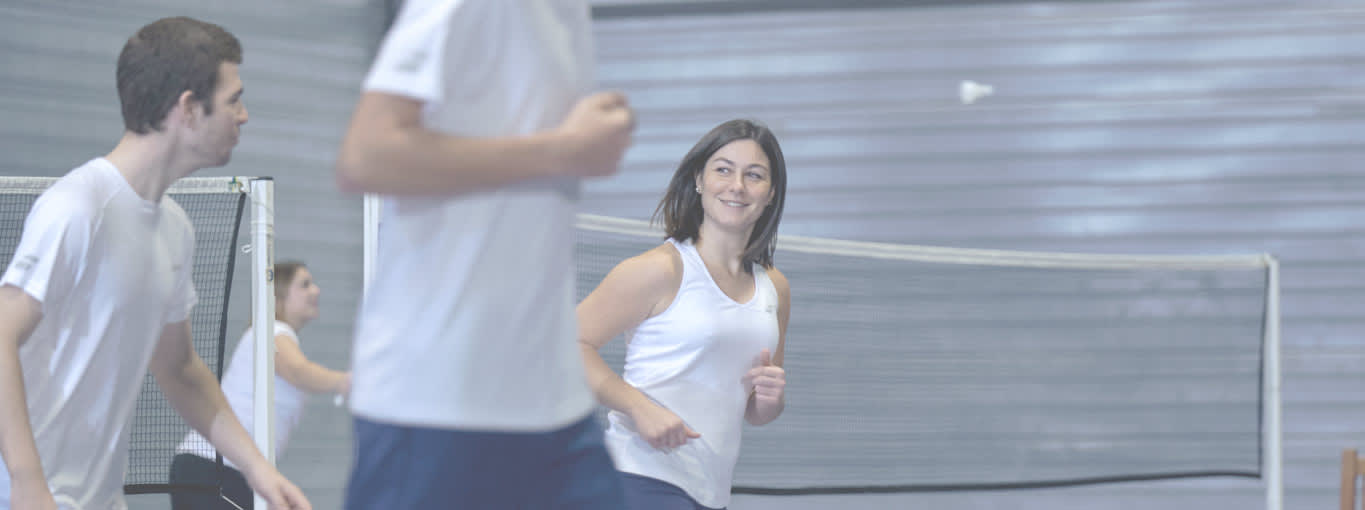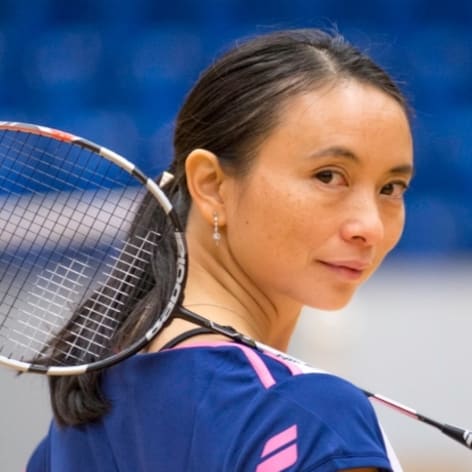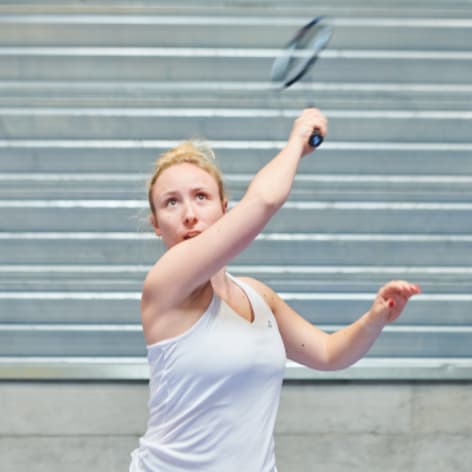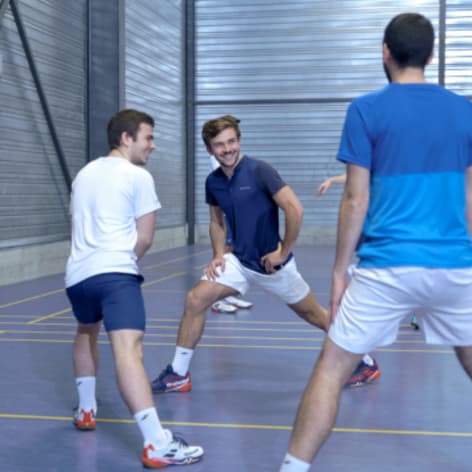In this article, former World number 2 and Babolat Ambassador Hongyan Pi together with her long time physical coach and expert Julie Cukierman explain how important the warm-up is for different reasons:
- Avoid injury
- Make your practice sessions more efficient
- Prepare better for your matches
This can be achieved by working on different aspects of the warm-up: the stretching part, passive and active muscle work, and fun games on court.
Before even thinking about taking your racquet out of the bag, one thing needs to be done. Top stars always do it. Leisure players do it. Or should: Warming up.
And there are good reasons behind it.
Why should you warm-up?
Warming up is part of any badminton player’s preparation, whether it is before practice, or before competition. As part of a practice session, warming up is important to reach your goals and make the session even more efficient. And it is also a good way to start working on other things which make for a good badminton player: the flexibility, the agility and the coordination.
Overlooking your warm-up can lead to a very bad start in your match. Or even worse, to an injury. A good warm-up, on the other hand, allows you to prepare mentally as well as physically in order to be ready for your match.
It is advised to warm up around 15 to 20 minutes before practice and around 30 to 40 minutes before a match.
Step by step
The warm-up can be done in different steps: the general warm-up, which is common to all sports, and a warm-up which is more specific to badminton. Here, we will show you a three-step warm-up, but one important thing is to always adapt it to your needs, and change it with time or depending on your form of the moment. Warming up has to be efficient, but also fun!
Step 1 – Stretching and joint mobility (5 minutes)
A. WORK ON BODY JOINTS
Move around your joints to decrease the stiffness. Badminton can be tough on the following joints: wrist, elbow, shoulder, hip, knee and ankle. Each of these particular joints must be moved in different axes, for 20 to 30 seconds per movement
You may do these exercises without your racquet, but, if you’re really eager to hold it, you may as well use it to warm up some of them.
For the upper body, swing your racquet back and forth as if you were playing a defence (forehand or backhand) as well as wrist play 20 times each.
B. PASSIVE STRETCHING AND MUSCLE AWAKENING
Stretch gently – avoid using a full strength for any of the following exercises. Do not use full strength on the part of the muscle you are working on. Go softly but reach as far as you can and work gently to your limits to allow good blood flow into the muscles.
The most important muscles to stretch are the thighs (front, back and inside), the calves, shoulder and back muscles. The stretching should last between 20 and 30 seconds per muscle.
Step 2 – Active warming up (10-15 minutes)
Start with a light running session (5 to 10 minutes) and athletic exercises, plus various footsteps.
Different options are possible. You may run first with a slight increase in the pace (5 to 7 minutes). Then do the athletic exercises (high knees, hip twist, grape wine, side steps, etc) and fast feet on a short distance – 20 metres back and forth. Another option is to include the various footsteps and athletic exercises within the running session, which then should last around 10 minutes.
Don’t forget: Warming up should be fun. If you hate warming up, you’ll have the tendency to skip this crucial part of your training routine. Try to find exercises that you like! Also, use variations in your routines to avoid getting bored.
Skipping rope, body core and working with rubber bands for the upper body can also make a good active warm-up.
Steps 1 and 2 can easily be used as well for any other racquet sport like Padel and Tennis.
Step 3 – Let’s get on court!
You’ve been patient enough. Time to take your racquet!
Once again, go step by step. Don’t rush and hit the shuttlecock too hard at first. Start with flat drives, slowly first, then accelerating the pace. Work on half courts first, then extend your area of movement. This will allow you to find your balance, good footwork and find good feelings, which will allow you to control the shuttlecock better. You can then switch to clears (high clear first, then fast clears) before … smashing hard!
You are now all ready to play!
Hongyan’s tip: You may want to end your warm-up with a “Shadow badminton footwork” session (some people do it before the active warm up or before hitting, but I find it more efficient to do it just before my match or training session). During the shadow, focus first on your pushing points, then on your court coverage with a particular emphasis on your “first jump”.
Julie’s tip: These are just ideas of exercises you can do for a good warm-up, but don’t hesitate to add others. Warm up with a friend, and challenge yourself. Training in general and the warming up part should remain fun!







